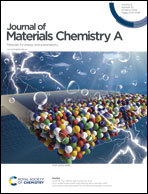The mechanism and challenges of cobalt-boron-based catalysts in the hydrolysis of sodium borohydride
Abstract
Among boron compounds, NaBH4 has emerged as a prominent candidate for hydrogen energy sources owing to its environmentally friendly characteristics and a high hydrogen content of up to 10.6 wt%. However, the hydrolysis of NaBH4 on catalyst surfaces is an exothermic reaction, necessitating catalysts with high stability and structural strength for efficient hydrolysis. Previous studies have demonstrated that Co–B alloys exhibit favorable catalytic activity for NaBH4 hydrolysis. In this review, we summarize the synthetic methods, catalytic characteristics, applications, and reaction mechanisms of Co–B-based catalysts for further investigation. The report provides an overview of the relationships between the material structures, properties, and applications of Co–B-based catalysts. Firstly, we introduce the hydrogen generation mechanism of NaBH4, followed by a discussion on recent progress in the synthetic methods and catalytic properties of unsupported and supported Co–B-based catalysts. Finally, we summarize details related to Co–B-based catalysts with supporting structures. Notably, among supported structures, exceptional hydrogen generation ability is exhibited by a Co–B/BFS catalyst at 70 410 mL min−1 g−1, while among unsupported structures, the highest HG value is observed with Co–Mn–B at 35 000 mL min−1 g−1. Lastly, we provide a brief outlook on future development prospects for Co–B-based catalysts in NaBH4 applications.

- This article is part of the themed collection: Journal of Materials Chemistry A Recent Review Articles


 Please wait while we load your content...
Please wait while we load your content...